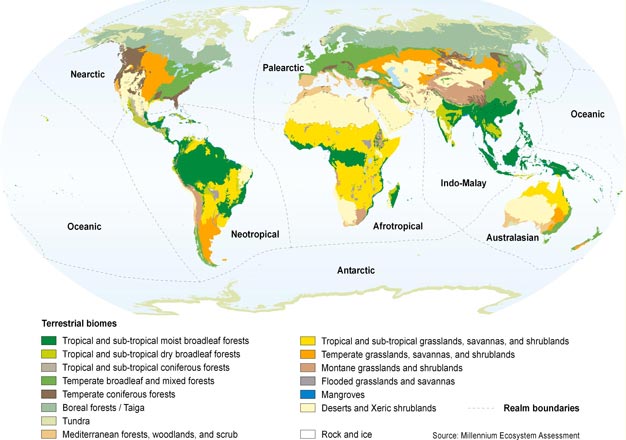

When you combine this with how hotter air carrying moisture is meeting colder air or mountains you will see where it gets more or less rainy. When you know where warm and cold water currents are moving it will be easier to see which zones will be warmer or colder on land. There should be models online for how ocean and wind move when they are unhindered. When you have land and mountains you look at how the land and mountains interfere witht he ocean and wind currents. Plate teutonics will also tell you where there might be vulcanoes and hot springs.

It will also indicate where there will be different rock types and different soil types. The way I did it for my world building was I started with the continental plates and how they had been moving in relation to each other, this movement decides where land and mountains will be. A vast tundra at sea level near the equator is equally wrong. Lush rain forests in the rain shadow of mountains is flat wrong. Making believable climates rests on getting your water cycle and latitudes right.

For example, what's the difference between the Sahara and the Gobi deserts? Find every example of that terrain type and compare them. Picks a climate type, desert, rain forest, savanna, tundra, which ever you like. Select a few points and repeat this process. Look up maps of prevailing winds (a brief Google search turns up hundreds of such maps) and find any mountain ranges between the selected point and the nearest ocean in the direction against the prevailing wind. Pick a random point over land and look up the climate at that location. Get a big map of Earth or open Google Earth. Here's a few ideas that may help you explore our planet and make your own more believable. There are some interesting world generation programs/websites out there that allow a user to explore the interplay of plate tectonics, trade winds, ocean mass and a few other factors.Īs you have noticed, getting climates right is hard and takes a lot of study.


 0 kommentar(er)
0 kommentar(er)
